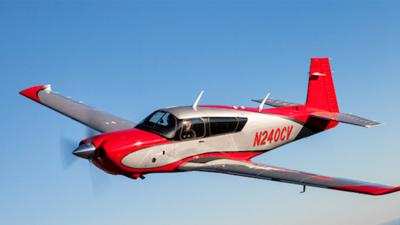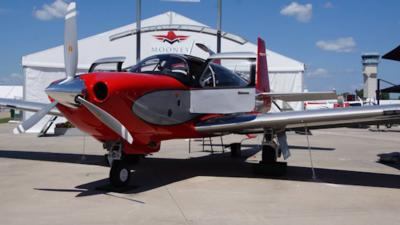Thu, Jun 03, 2021
AD 2021-10-17 Requires Inspecting The Alternator Main Power Cable And The Exhaust Crossover Tube For Damage
The FAA is adopting a new airworthiness directive (AD) for certain Mooney International Corporation (Mooney) Model M20V airplanes.

This AD was prompted by reports of short circuit and arcing of the alternator main power cable in the engine compartment. This condition, if unaddressed, could result in a fire hazard, loss of engine thrust control, and reduced control of the airplane. This AD requires inspecting the alternator main power cable and the exhaust crossover tube for damage, replacing damaged parts as necessary, and installing an additional alternator cable clamp. The FAA is issuing this AD to address the unsafe condition on these products. This AD is effective July 7, 2021.
Supplementary Information: The FAA issued a notice of proposed rulemaking (NPRM) to amend 14 CFR part 39 by adding an AD that would apply to certain serial-numbered Mooney Model M20V airplanes. The NPRM published in the Federal Register on March 9, 2021 (86 FR 13502; corrected March 17, 2021, 86 FR 14554). The NPRM was prompted by reports of short circuit and arcing of the alternator main power cable in the engine compartment.

Mooney determined the alternator main power cable was incorrectly positioned with slack in the cable and allowed contact between the alternator main power cable and turbocharger right-hand (RH) exhaust crossover tube. In one instance, this contact caused arcing of the alternator main power cable and created a hole in the RH exhaust crossover tube, which may result in a fire hazard. A damaged crossover tube may also decrease effectiveness of the turbochargers and cause complete loss of engine power at higher altitudes (above 9,000 ft. above sea level). In the NPRM, the FAA proposed to require inspecting the alternator main power cable and the exhaust crossover tube and modifying the alternator main power cable routing by installing an additional alternator cable clamp, part number (P/N) MS21919WCJ6. This condition, if not addressed, could result in an inflight fire and loss of engine thrust control, which may lead to reduced control of the airplane. The FAA is issuing this AD to address the unsafe
condition on these products.
More News
He Attempted To Restart The Engine Three Times. On The Third Restart Attempt, He Noticed That Flames Were Coming Out From The Right Wing Near The Fuel Cap Analysis: The pilot repor>[...]
Make Sure You NEVER Miss A New Story From Aero-News Network Do you ever feel like you never see posts from a certain person or page on Facebook or Instagram? Here’s how you c>[...]
From 2009 (YouTube Edition): Leading Air Show Performers Give Their Best Advice for Newcomers On December 6th through December 9th, the Paris Las Vegas Hotel hosted over 1,500 air >[...]
Aero Linx: NASA ASRS ASRS captures confidential reports, analyzes the resulting aviation safety data, and disseminates vital information to the aviation community. The ASRS is an i>[...]
“For our inaugural Pylon Racing Seminar in Roswell, we were thrilled to certify 60 pilots across our six closed-course pylon race classes. Not only did this year’s PRS >[...]
 NTSB Final Report: Rutan Long-EZ
NTSB Final Report: Rutan Long-EZ ANN FAQ: Turn On Post Notifications
ANN FAQ: Turn On Post Notifications Classic Aero-TV: ICAS Perspectives - Advice for New Air Show Performers
Classic Aero-TV: ICAS Perspectives - Advice for New Air Show Performers ANN's Daily Aero-Linx (06.28.25)
ANN's Daily Aero-Linx (06.28.25) Aero-News: Quote of the Day (06.28.25)
Aero-News: Quote of the Day (06.28.25)




